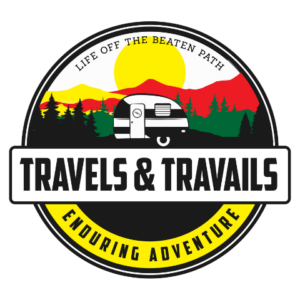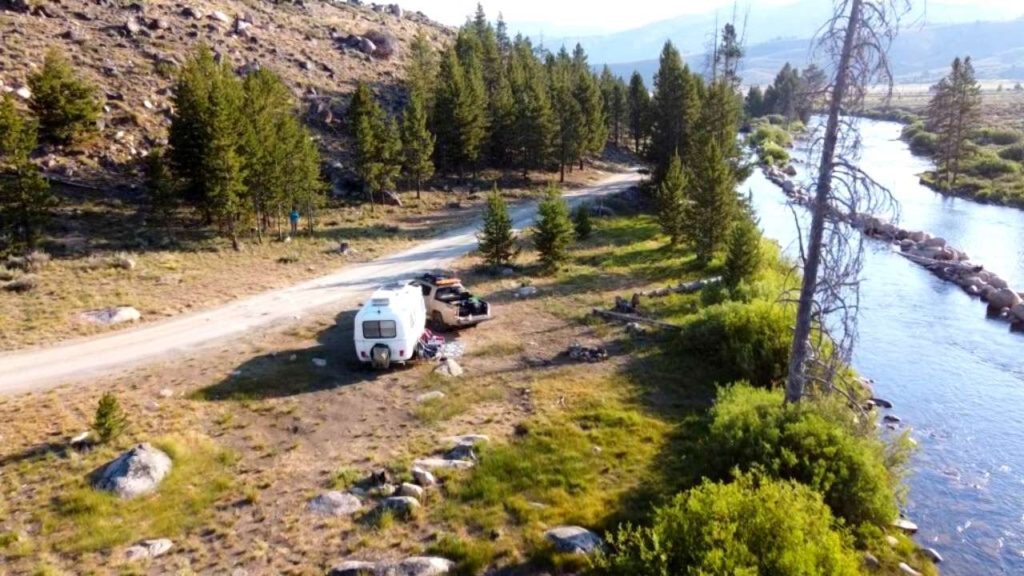
Camping terminology can be confusing when discussing dry camping, dispersed camping and boondocking. It doesn’t help that the meaning of these types of camping overlap.
So what is the difference between boondocking, dry camping and dispersed camping?
- Boondocking: Camping without water, electricity, and waste disposal – most often with camping at a Walmart or Cracker Barrel, but it can be any type of camping without hookups.
- Dry Camping: Camping without water, electricity, and waste disposal hookups- camping location could be anywhere, including a campground that doesn’t have RV hookups.
- Dispersed Camping: Camping on public lands like the National Forest Service (NFS) or Bureau of Land Management (BLM) outside of a campground.
Boondocking
You might be wondering, “Why is it called boondocking?” The English word “boondocks” has always been associated with a place far away from civilization. But did you know that it word boondocks is derived from a Filipino word for” mountain?”
How Long Can You Last Boondocking?
You can boondock for several weeks if you have enough water, food, power, trash, and sewage tank capacity in your RV as these are the limiting factors to boondocking. Some people get around the limitations of the tank capacity by having a composting toilet or a dry flush toilet instead of a traditional toilet.
Sewage/Waste
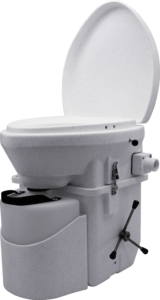
Most composting toilets separate the liquid waste from the solid waste. The liquid waste can be emptied in any acceptable location such as a toilet, outhouse or sewer drain. In some back-country areas, you can pour the urine out any place that you would normally be allowed to urinate. Check with the government agency where you are camping for proper disposal of urine. Please don’t toss your waste onto the highway – yes, people do it. Wood chips or sawdust are added to the solid waste of a composting toilet, prior to doing your business. Still, it takes 120 days for solid waste to be completely composted so don’t think you can empty this waste under a tree in the forest. The best way to deal with the solid waste is to bag it up, seal the bag, and place it in a dumpster.
A dry flush toilet is akin to a diaper genie – you do your business and press a button that the whole deal gets enclosed into a bag that you throw in the trash. Dry flush toilets are far more convenient than composting toilets, but they are expensive to buy. Plus, the bags are expensive. And, they have to have an energy source to operate, but boy are they efficient and convenient. You can keep using it until you run out of bags or space to store the bags!
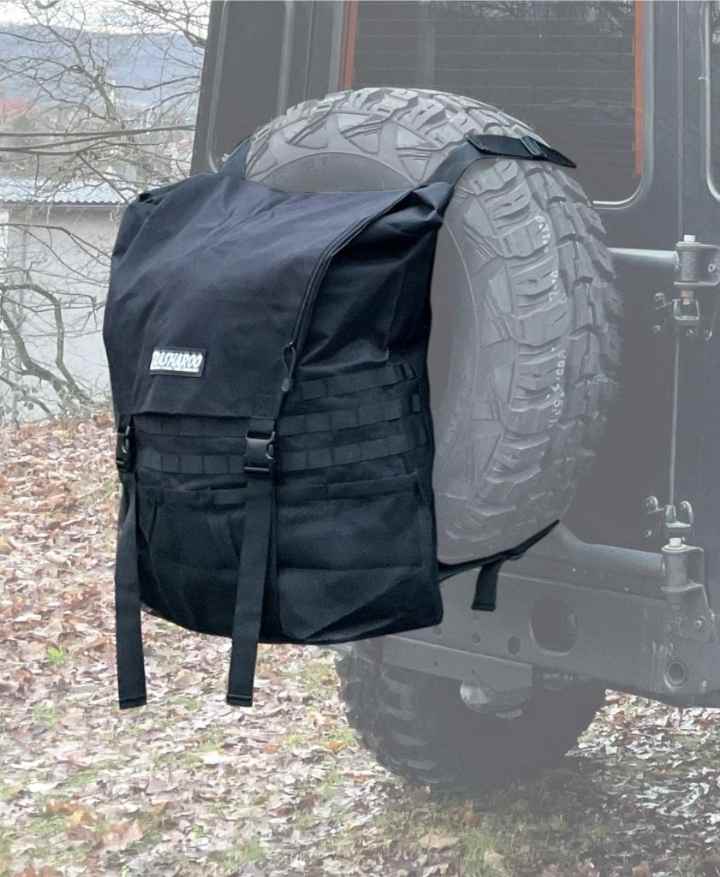
Trash is another limiting factor. You’ll only have so much storage for your trash. We have a Trasharoo that attaches to the spare tire on the back of our trailer. It’s also great for storing firewood. We can bring firewood into an area and burn it then use the space in the Trasharoo for trash. You can also consider what you are packing for food. Wrappers take up lots of space in the trash. Reducing the amount of packaging will also reduce your trash. Boxes are the worst. Remove items from boxes when you’re packing for a trip. Be sure to label the items and include directions where applicable. We love Ziplock or other zipper bags. We frequently pre-make meals and store them in Ziplock bags then freeze them and stack them on their side in the freezer. The empty Ziplock bag doesn’t take up much room in the trash. If you’re looking for some ideas about how to cook while camping, check this out.
Food
With cold food, you are limited by your refrigerator and freezer space. We frequently take dried meals that just need water to cook or pre-cooked items like cooked packaged rice and canned or precooked meat. This also saves on fuel. Keep in mind that, after you open the package, you’ll need to refrigerate any leftovers. One way to make a complete meal is to use the Knorr packaged pasta and add shelf-stable meat, like chicken, to that. The pasta is already seasoned so it makes an easy meal. This extends the time that we can boondock.
Power
Lack of power could potentially limit the time you spend boondocking. At a minimum, you’re RV needs power for lights, the refrigerator, the furnace, and the water pump. We have tackled this by having roof-top solar with lithium batteries. You could get by with AGM batteries if you also have a generator. We have a gas-powered generator. If we don’t have very much sunlight, or if we want to run our air conditioner, we run our Honda EU2200i Companion generator. There are many options if you’re interested in finding a quiet generator. If you don’t have a 12 volt refrigerator, you’ll need propane to run your refrigerator. While propane is a limiting factor in boondocking, we have never had a problem with running low on propane. You can also purchase a generator that will run on either gasoline or propane.
Water
Another limiting factor when you are boondocking is water. You can always carry extra water in containers, but, other than that, you are limited to the water in your RV holding tanks. There’s a trade off between water and trash. If you wipe your plates and pans to save water then you end up with more trash. When washing dishes, we like to pretreat the pans with spray on Dawn Power Wash dish washing liquid.
Can You Shower While Boondocking?
You absolutely can shower while boondocking, but keep in mind, the amount of water that you use will limit the amount of time that you can stay as you must to have enough water for cooking, washing dishes and flushing the toilet. To lengthen the time between showers, use wipes and dry shampoo.
Where Do You Shower When Boondocking?
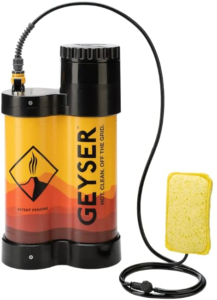
Many people shower in their RV, but if you don’t have a shower available for camping, where do you shower? There are several options for showering while boondocking. A very simple and inexpensive option for showering is to purchase a portable shower and a shower tent enclosure. A portable shower can be as simple as a dark-colored bag that uses gravity to deliver the water to a hand-held pump that pumps water that you heat, all the way to a heated shower that uses minimal water. If you prefer privacy, then a privacy enclosure is in order. Some options are very compact, but may not withstand a powerful wind, while other more sturdy enclosures will take up more storage space.
Is Boondocking Illegal
There are plenty of legal places to boondock, you just have to check ahead of your stay. On the East Coast, places to boondock are more limited than the West coast, where there is plenty of BLM and National Forest land. Some people “stealth camp” in areas or neighborhoods where camping is illegal. However, it is not necessarily legal to stealth camp in most locations.
Some Walmart and Cracker Barrel locations allow boondocking. If there are signs at Walmart telling you that boondocking is not acceptable, sometimes you can talk to the store manager to see if they will make an exception. Outside of town or city regulations, Walmart is usually trying to stave off homeless populations from making Walmart their home. Here are some apps that will help you find boondocking locations. If you have a fully enclosed camper, consider an annual subscription to Harvest Hosts. For a nominal annual fee, you have access to over 2500 campsites, most being dry camping locations.
Dry Camping
Like I mentioned, dry camping is really just camping without hookups. There are many different location types with dry camping. For example, you might not have hookups at some state and national campgrounds. In addition, if you camp at Harvest Hosts locations, most don’t have hookups. Boondocking locations do not have hookups either. The impetus behind dry camping is self-sufficiency and the benefit is often camping at a place where you aren’t piled on top of other campers.
Dispersed Camping
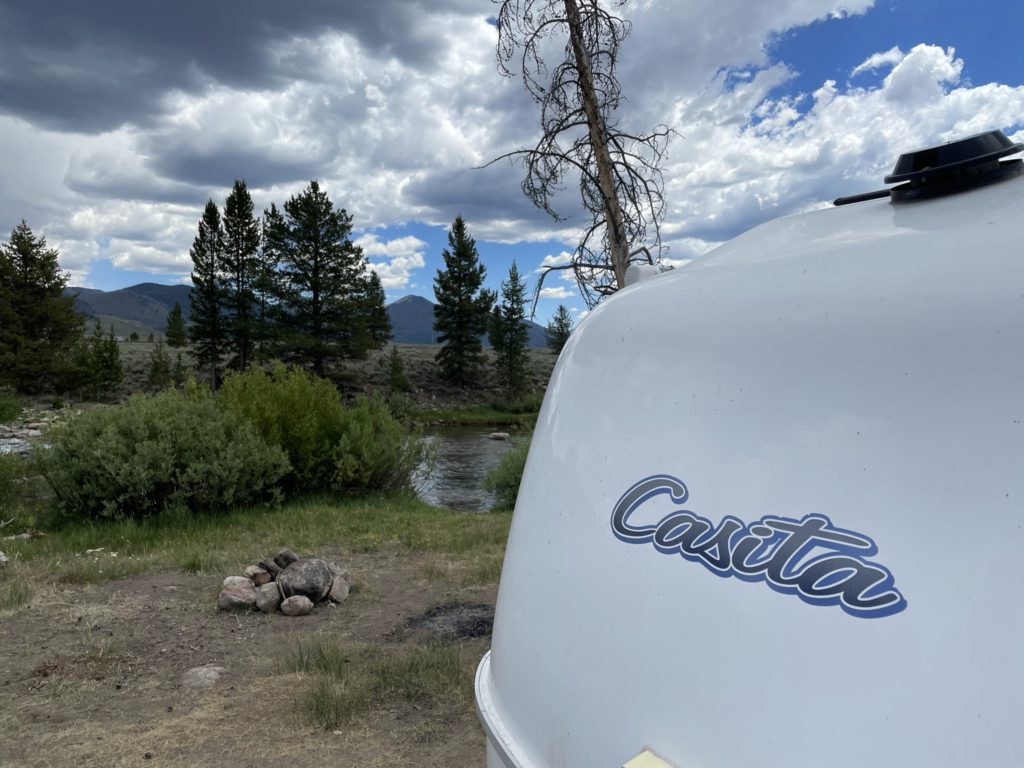
Dispersed camping is like dry camping, in that, you won’t have any hookups. However, when you are dispersed camping, you are normally camping on public lands like BLM or NFS. Care must be taken to follow the rules of the local agency where you are camping so that these camping locations will continue to be available in the future. Observe the stay limit and leave the campsite better than you found it.
Full Hookups
What does “full hookup” mean when camping? When you are camping with “full hookups,” it means that your RV has access to water, electricity, and a sewer drain. In some campgrounds, you might have access to only water and electricity while there is a location to dump your waste tanks. This is known as partial hookups.
Is Boondocking Safe
Boondocking is quite safe and may even be safer than going to the mall these days. Unfortunately and infrequently, reports of murders of people who are boondocking are broadcast in the media. For example, you may have heard of the couple that were murdered while boondocking on a Texas beach. Again, there was the report of a different couple who were murdered while boondocking in Utah. These incidents are extremely rare and that’s why you hear them on the news – because they are so unusual. There are always risks in camping. Aside from the human predators, there are animal predators as well. Camping in a tent poses greater risk than camping in an RV. In addition, soft-sided campers, like tent trailers pose a greater risk then hard-sided trailers, especially when it comes to animal predators. Still, overall, I think it’s very safe to boondock. If you are worried, choose a hard-sided trailer. It’s difficult for both people and animals to know what you are doing, or to physically access your space, when in a hard-sided trailer. Plus, you have better protection. Some people carry protection when camping. That can range from bear spray or pepper spray to fire arms. We always carry bear spray when camping in areas where grizzly bears are present. It can feel isolating when you are camping outside a designated campground. Still, I think the risk is minimal. We’ve never had a problem with people or bears. However, we do take precautions based upon the risk of the area where we are camping.
Which State Has the Most Dispersed Camping?
States like Wyoming, Montana, Utah, Arizona and Colorado have the most opportunity for dispersed camping. Western states have more dispersed camping opportunities because of the wide swaths of BLM and National Forest land. California, New Mexico, Washington, Idaho and Oregon has a tremendous amount of land for dispersed camping.
Where in the United States Can You Camp for Free Boondocking?
The Western United States has a plethora of free boondocking locations. There are many apps where you can find free camping. Beside Walmart and Cracker Barrel, you can camp for free at many BLM and National Forest locations.
Where is the Best Place to Boondock?
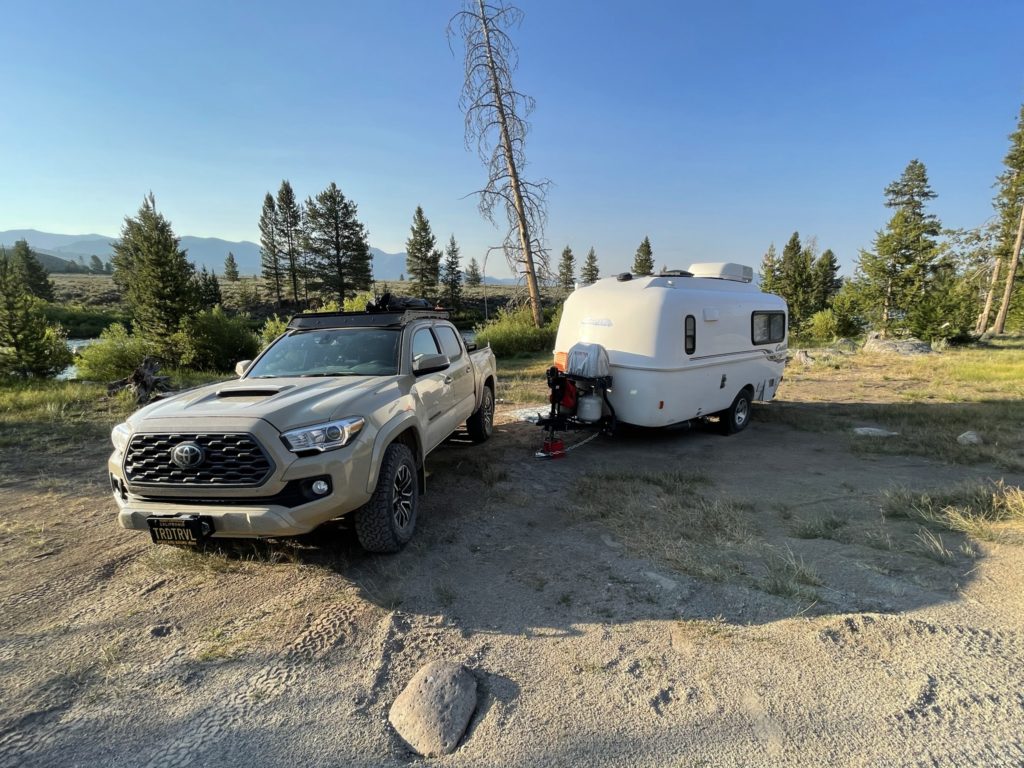
If I had to pick one location to boondock, I would choose Idaho. Idaho is more diverse than you would think; from high mountains to high desert, Idaho is one of the most beautiful states that I have had the pleasure to boondock. Plus, there are many locations for boondocking in Idaho. In the summer, when temperatures in Arizona are high, Idaho is quite mild and comfortable. If you love lakes, streams and mountains, Idaho is for you. If you want to find a quiet place to get away from it all, Idaho offers that. We boondocked just outside the booming resort town of MCcall, Idaho where we had access to restaurants and amenities , but were completely isolated at our campsite
What is the Best App for Dispersed Camping?
My favorite app for camping, including dispersed camping is Campendium. I also use Ioverlander quite a bit to find dispersed camping locations. The Dyrt is another app that I would recommend for finding dispersed campsites. We have a full list of apps that we used for camping.
Can you Disperse Camp in California?
California is one of the best places for dispersed camping. There are a wide array of camping destinations in California from dessert camping to mountain camping and everything in between. You can even disperse camp in Death Valley National Park!
What is the Minimum Distance You Can Camp Away From Lakes and Streams?
It’s recommended that you camp no closer than 200 feet away from any lake or stream. There are several reasons for this. First, you don’t want to contaminate the water with your activities near lakes and streams. Plus, flora and fauna near lakes and streams are very delicate. The most important thing to remember is to not urinate, defecate or wash dishes or bathe within 200 feet of a lake or stream.
Conclusion
There are many locations and opportunities to camp in remote locations. If you have the opportunity, take the time to rest and rejuvenate in the beautiful location of your choice.
